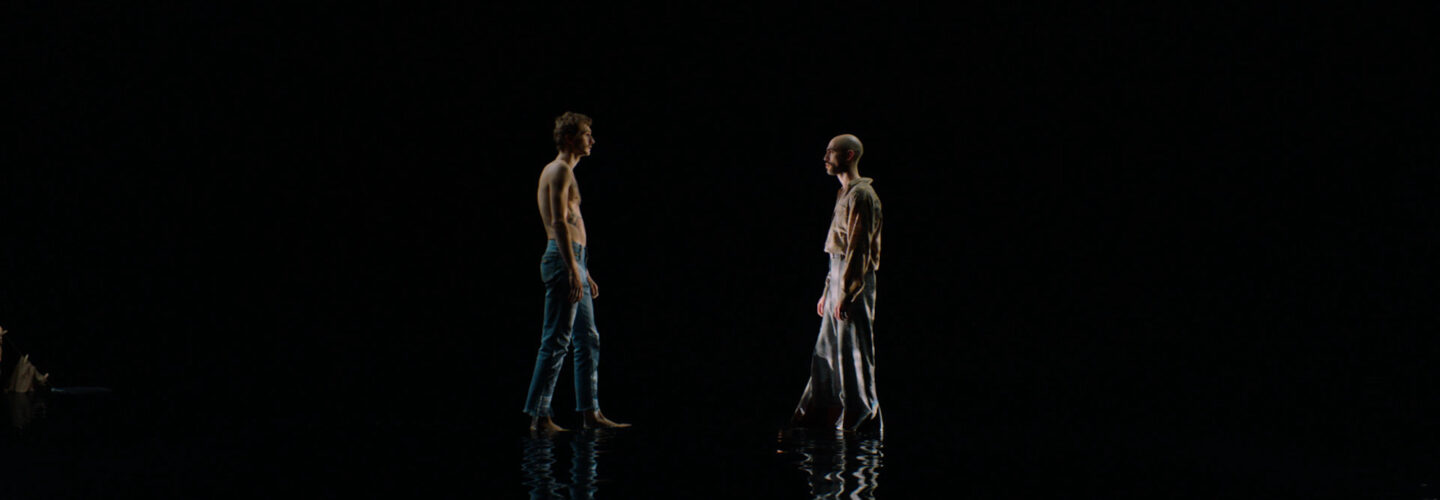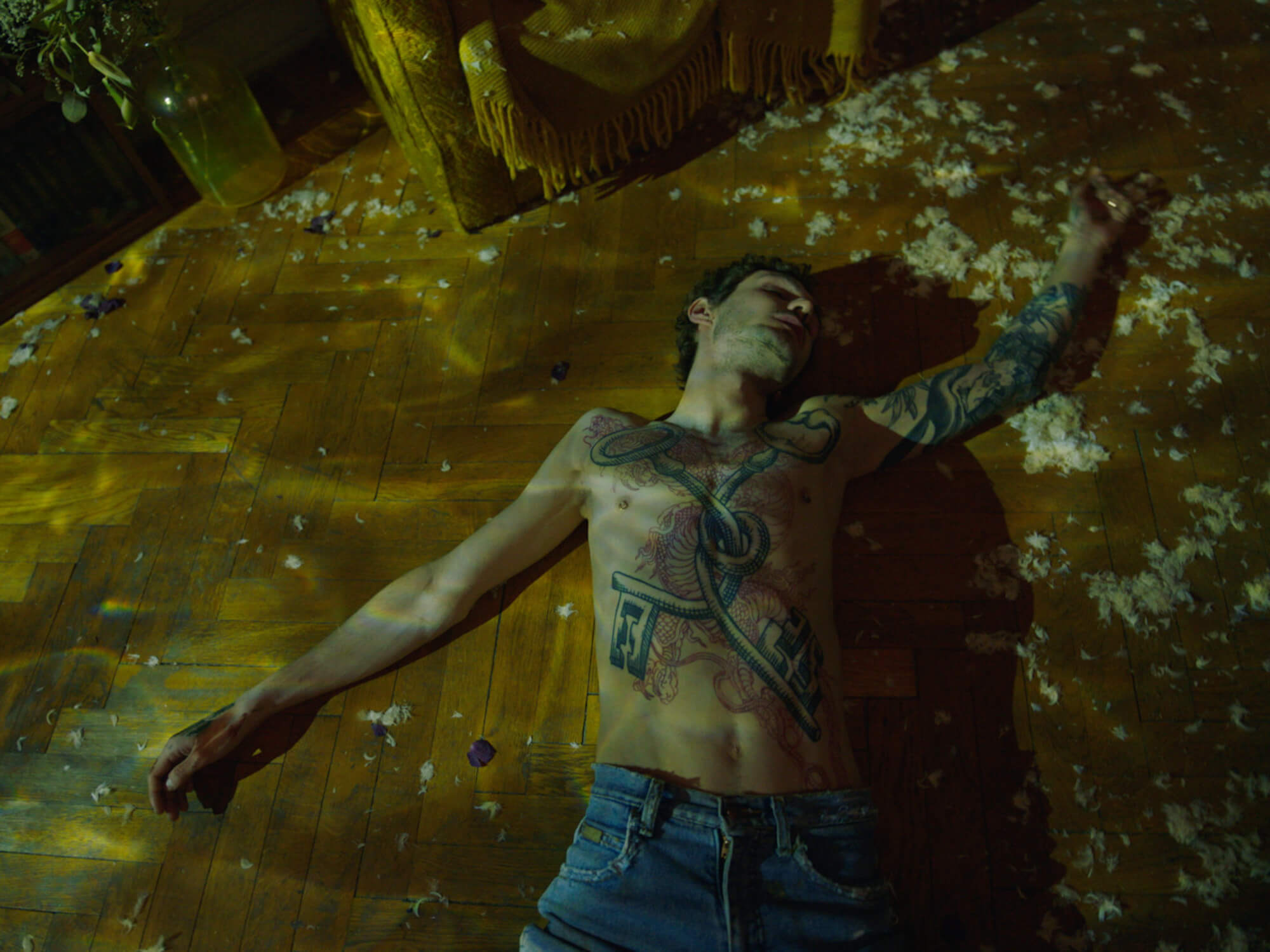
With anti-gay laws and mainstream homophobia very much at the forefront of society, even the simple idea of any queer media in Russia is halted at its inception. That’s what makes Andzej Gavriss’ music video for Sansara’s We Will Become Better even more powerful. A defiant video that celebrates the love between two men who are separated in their location yet intertwined in their emotions. It’s a beautiful video with fluid and moving choreography that expresses the desire shared between these lovers. We spoke with multi DN alum Gavriss about the challenges he faced in bringing it to life and the technical prowess that went into achieving his spellbinding choreography.
What initiated your involvement in making We Will Become Better?
A year ago an Agency Voskhod reached out to me with the script written by Evgeny Primacheko. It was the first Russian LGBTQIA+ film in years that actually portrays a gay relationship. I thought that it was a brave and important project and immediately jumped on board. The idea was so fragile and so loving, which is so different from what I normally do. I wanted to bring all of my own emotions into it, so I decided to co-write it. I wanted it to be an emotional rollercoaster.
What did you respond to in that initial script and what of yourself did you think you could bring to the project?
I grew up in the 90s in Latvia with the complete absence of sex education, where the topic of same-sex relationships was only a subject for gossip, insults and even often blackmail and violence. Anyone who lived then in the post-Soviet space knows how much society demonized the LGBTQIA+ community. The society unreasonably imposed a stigma of clichés, stereotypes and aggression towards people who just want to love each other without hiding their feelings, go to work without wearing a heterosexual mask, just hold hands in the park without fear of getting physically injured. I wanted to break the clichés, stereotypes and talk about pure love. And if the Russian audience feels for the couple, hopefully that can change their minds.
I knew for a fact that the film would be controversial for the majority of a Russian audience.
How did that cliché breaking desire influence this concept of two men, in different spaces, connecting through movement?
My initial thought was that the actors’ performance in a choreography-driven film should be captured in a spontaneous way. It felt like we needed to have a lot of improvised moments on set, let them live as Terrence Malick and Wong Kar Wai do in their movies. I felt like creating a storyboard would put the dancers and choreographer in a box and destroy the chemistry between the characters and that’s the last thing I wanted to happen.
After playing with the script inside my head for a few weeks, visualising scenes, blocking, imagining the acting, and framing gave me a really good idea of where I wanted to take the visual and emotional part of the film. I just could not stop thinking about it, I was totally in love with the visuals and I wanted the whole crew to see them, and at some point I decided to put everything on paper.
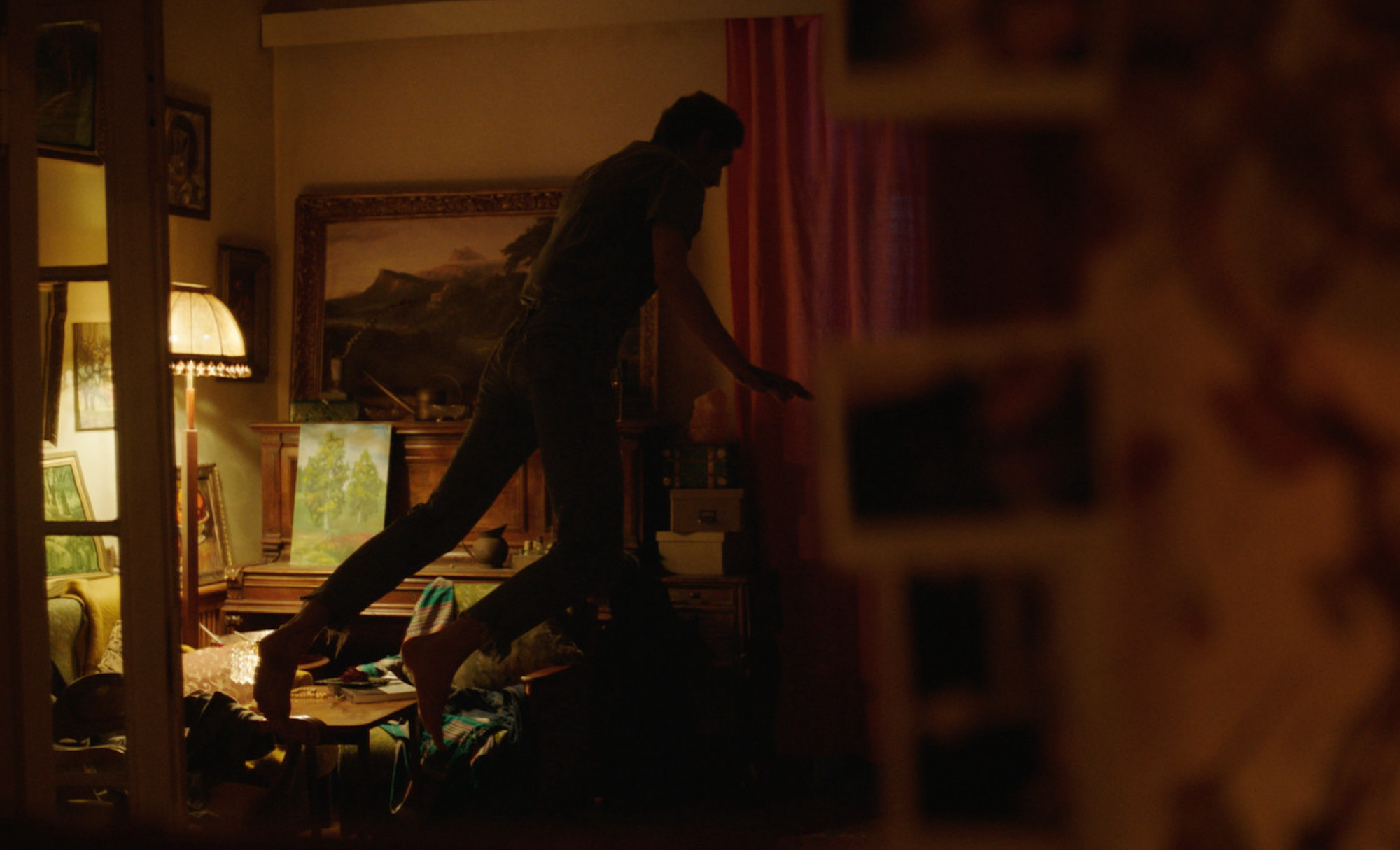

How crucial was the storyboarding process for fully developing how the film would be presented visually?
Developing the storyboard gave me the key idea to use a 4:3 aspect ratio to help portray the isolation between the actors, and 2.35 aspect ratio for the black void to portray freedom and unity. Also, playing with framing and shots on paper gave a good starting point of how to create the feeling of them being separated, yet still together at the same time.
Given that you are tackling issues that are viewed as controversial in Russia, how have you managed the reception of the film?
I knew for a fact that the film would be controversial for the majority of a Russian audience. All of us wanted this film to be an eye-opener. Starting the film with two men in love would scare a vast homophobic part of the audience. So I decided to immerse the viewer into the film so deep that they would see beyond sex cliches. I wanted to show two human beings that are in love.
The only way for the Russian orthodox part of the audience to change their mind on the subject is to make them feel. For that I created an emotional diagram that looked like this: We open our film with the dramatic feeling of two people in love being separated. The feeling of despair should evolve into a passionate personal performance where the audience falls in love with the characters. The tenderness of the couple being together gets destroyed by the awareness of this being just an illusion of freedom. Quite simple, but works well.
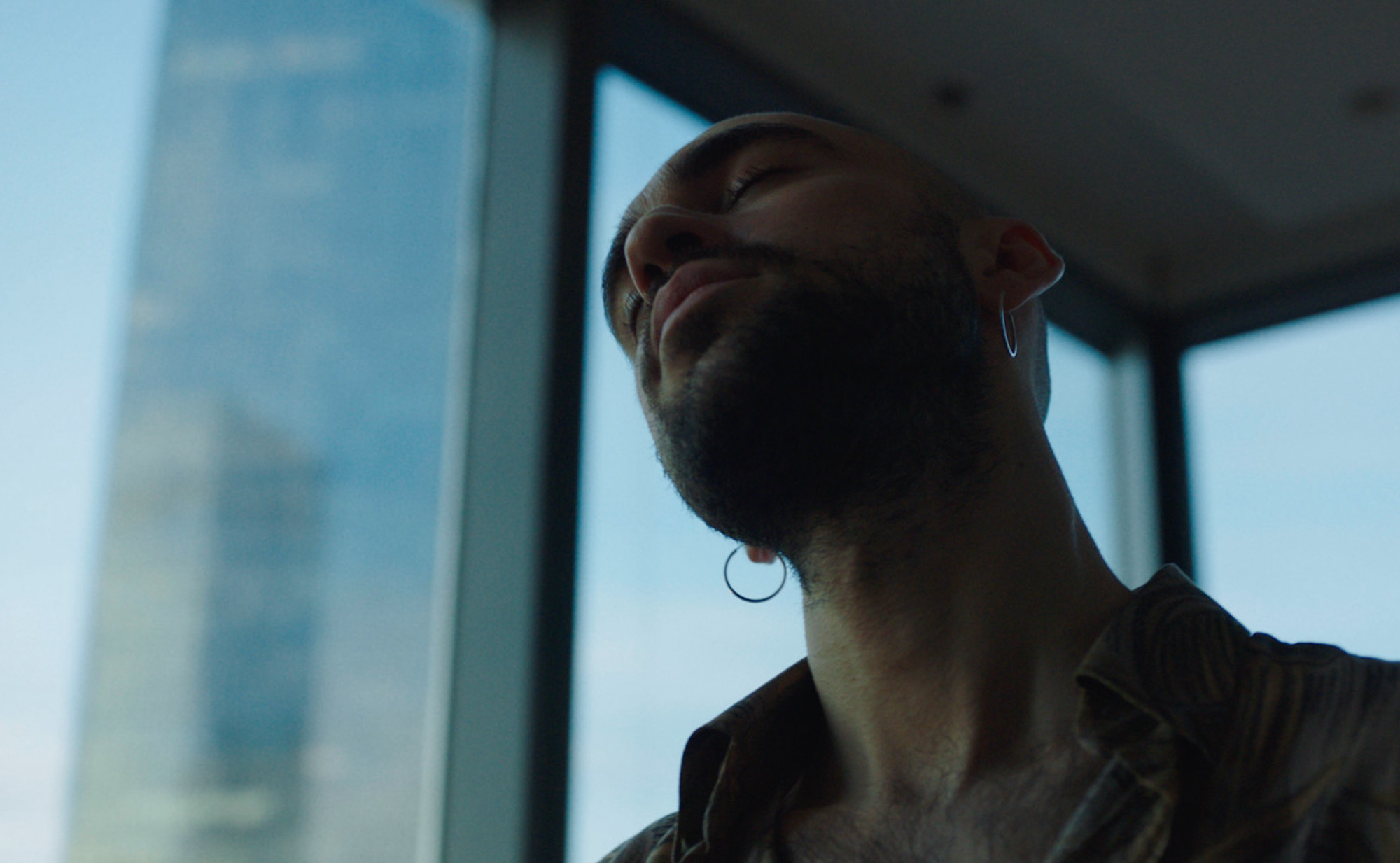
Did you face any challenges in obtaining your cast given its controversial topical nature?
The first obstacle was finding dancers who are openly gay and would love to participate in an LGBTQ+ film that would be distributed in Russia. Before flying into Moscow, I knew that it was going to be a challenge so I prepared myself that I had to stay strong. After a few weeks of casting, hundreds of rejections and realising that people love the script, but are deeply scared for their careers, I decided to let go of my original brief and just find a talent who was capable technically and emotionally of pulling off the performance. Luckily after a few days we received an exceptional tape from Nikita Orlov, it literally gave me goosebumps. We immediately got him on board.
On this positive note, we continued scouting for the second role and got into the same place of rejections. The casting process caused a major shift in the timing, and we decided to push the shooting days a week later. My day started with browsing through Instagram profiles and ended the same way, all of the crew members were doing the same thing. We had a few callbacks, but I was not feeling the actors. All of this got us another delay in the schedule and the casting director could not handle the pressure and stepped out of the project. I remember going back home from another audition and trying to convince myself that the actor I just saw was good enough. Luckily I know the feeling, so I stayed persistent that we needed to see more dancers.
The same day when we had our conference call about how we couldn’t push our schedule any further because of the budget and other crew members availability, Max Avdeev came to the audition. We sat together and I started reading him the script, then in the middle of it I stopped and we just talked about our families and childhood as if we’d known each other for the last ten years. Then I heard our Line Producer Alexandra Galius saying that we were running out of time and needed to start recording the audition. Max was so sensible and alive, his performance transported me into the film and he immediately got the role.
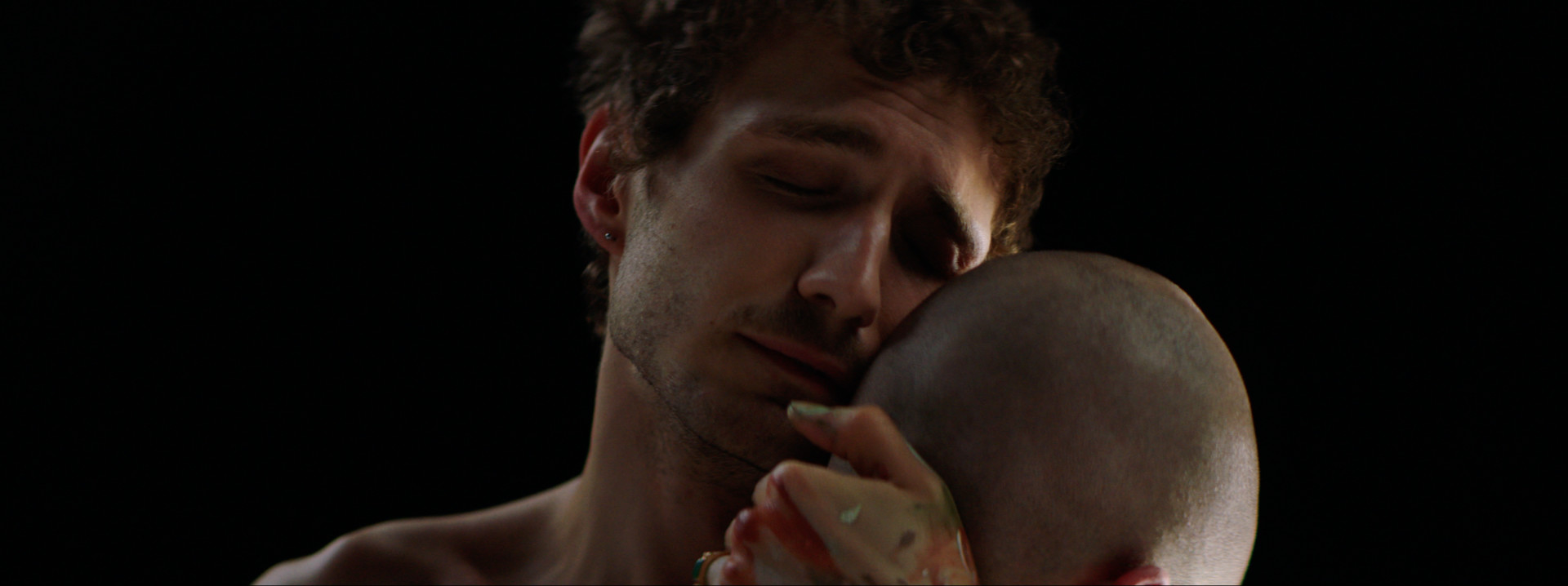
What was it like when it came to executing the improvised choreography with both of those actors?
Storyboarding helped a lot at the beginning for everyone to have a visual understanding of where I wanted to take the film, despite that on our first rehearsal I said that we needed to let go and explore. In the beginning our Choreographer Konstantin Koval and I wanted to create a chemistry between the dancers. We explained the emotional state of the characters and asked them to improvise. Our DP Andrey Nikolaev shot all the rehearsals on a phone and I would highlight the parts that I liked. For the first few rehearsals, we decided not to separate Max and Nikita in order to have a good understanding of the choreography we were about to create. There was a great emotional and creative connection between the four of us, all of us were proposing ideas, discussing the characters and their motivation, it was a pure joy built on trust and respect.
Playing with framing and shots on paper gave a good starting point of how to create the feeling of them being separated, yet still together at the same time.
After we developed the body language and solid choreography framework we separated Maxim and Nikita. I decided to step out a little and all of my focus went into shooting and editing rehearsals with my DP. We did rough cuts on the rehearsal, checked what did not work and showed it to the guys. The best thing about this process was trying to figure out the solutions, like all of us were solving the puzzle together.
After a few rehearsals we had a good rough cut, but the problem was that camera movement, framing and dancers’ movement depended on the space of where they would perform. Everything had to be in perfect sync for us to have the desired effect of Nikita and Max interacting with each other, yet being separated. After explaining everything to the producers we decided to continue rehearsing in the real film locations. We could not rent them out for the real rehearsal, so we had to cheat it and do a rehearsal at the scout. The amount of time we had on the scout was limited, but somehow we managed to shoot the whole film on the phone. Once the cut was ready, we gathered the main departments and discussed the film.
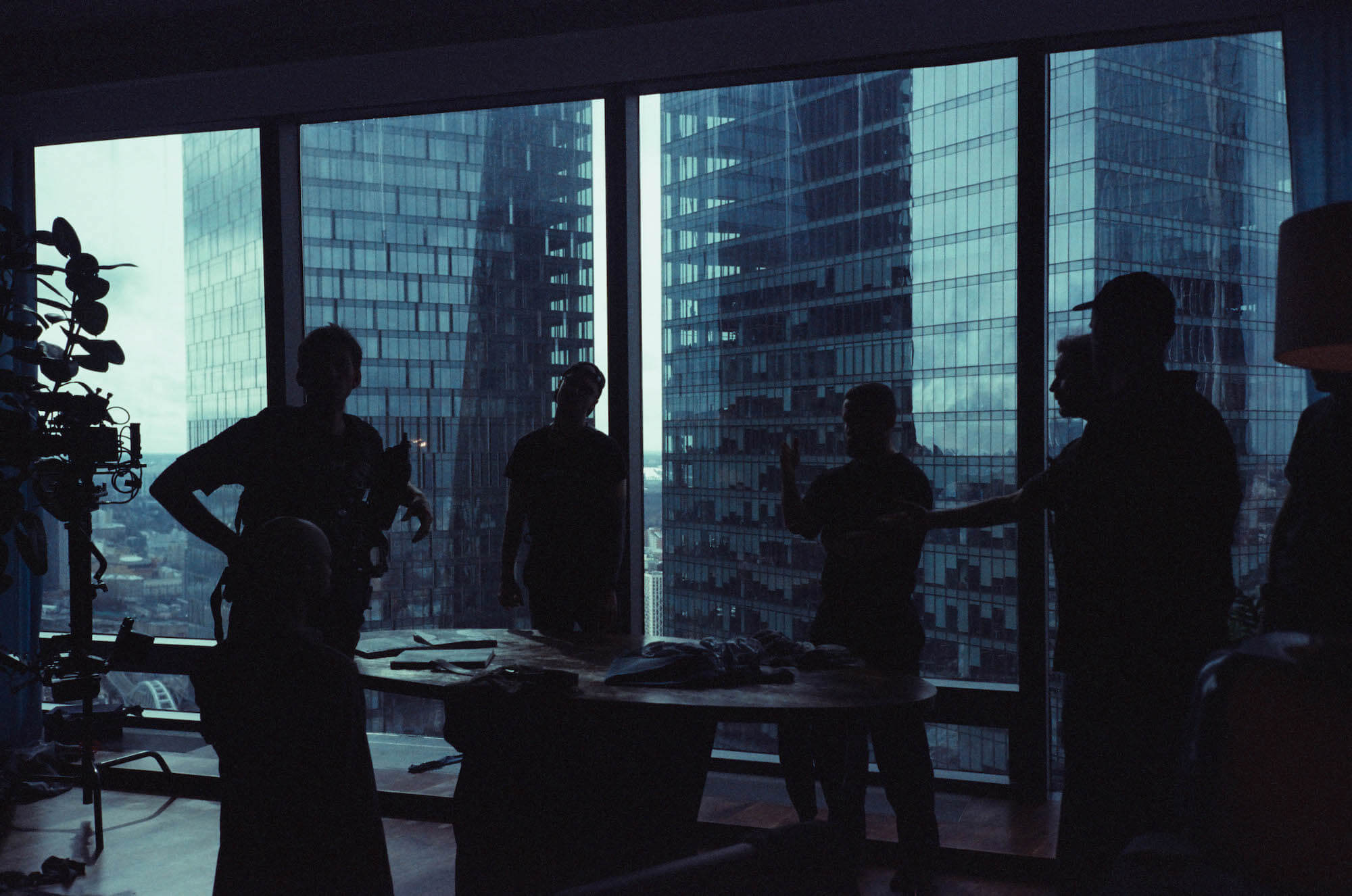
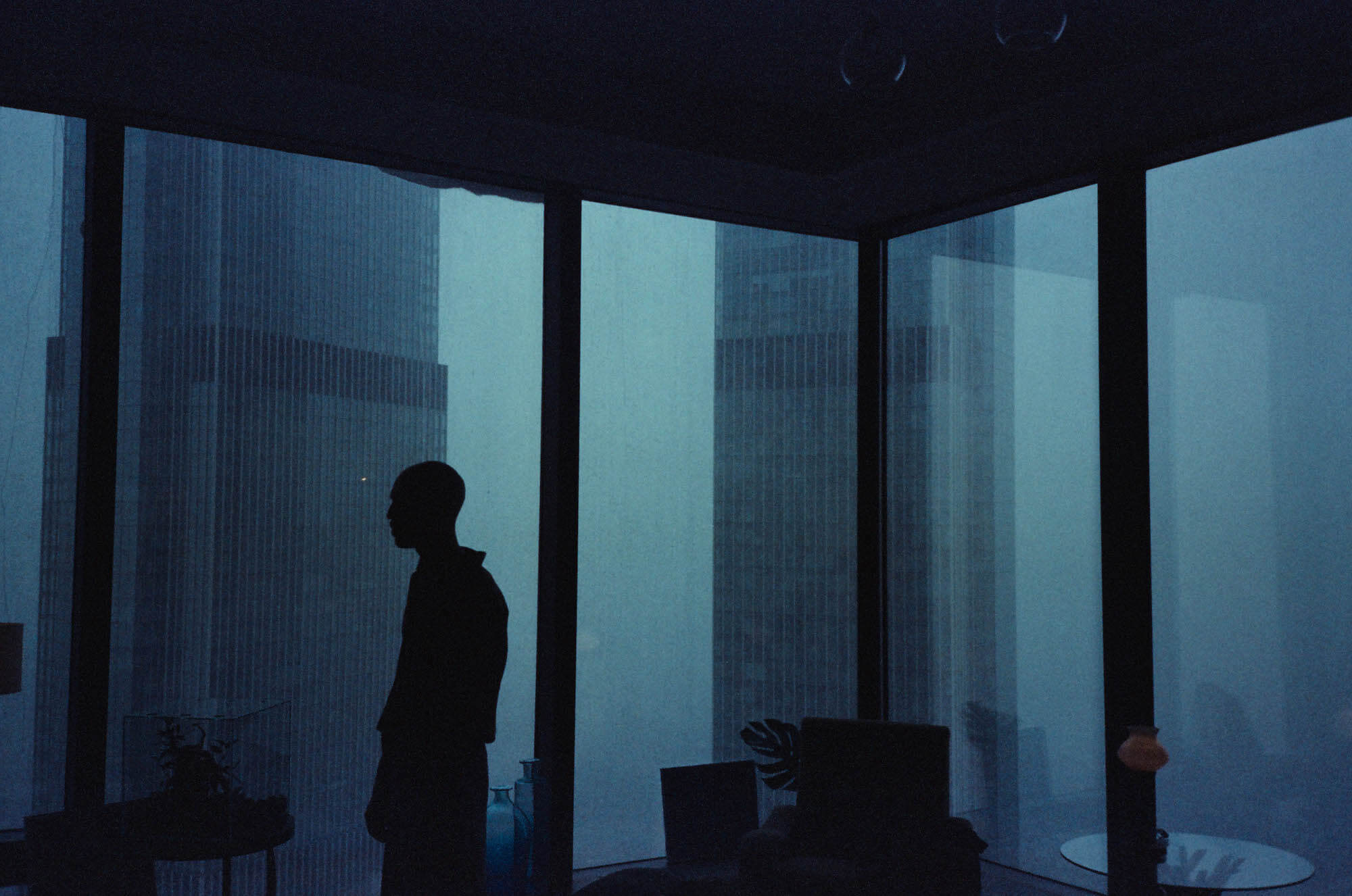
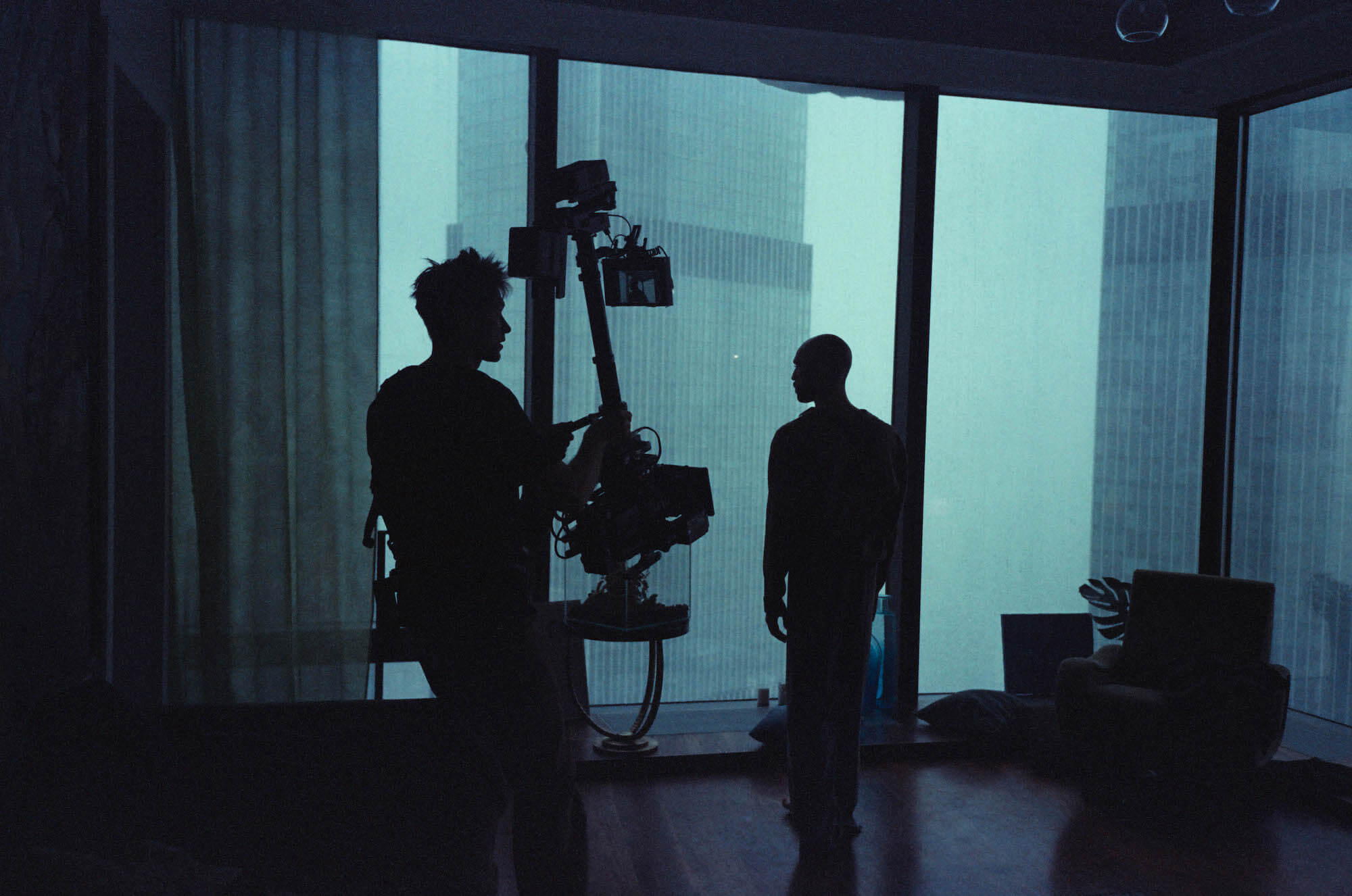
How did that limited rehearsal affect your plans?
That approach eliminated a lot of camera moves that we had planned to use and simplified the visual language of the film. Because we had to cut from one location to another that required smooth camera movements, this is why we shot the whole film on a Steadicam. Camera angles called for a great balance between being visually exciting and uniting two locations together so it feels like actors are dancing in the same space.
So after the casting difficulties and sparse rehearsal time how was the move into actual production?
The film is set in Moscow in 2021 in a city that offers free wifi in the subway. The town is so advanced that you can get anything you want at any time 24/7. Nonetheless having same sex relationships in public is highly forbidden. You can pretty much hold hands in a park, but be prepared to get a punch in the face. It’s not a secret to anyone that Moscow is full of gay people, just please leave your relationships at home and don’t forget to close the curtains so the neighbours will not see. The penthouse with a city view was a perfect location that worked as a metaphor to portray this absurdity. I wanted Max to perform in front of the whole city.
On the day when we were shooting in the penthouse a snowstorm came out of nowhere and blocked the view turning the location into a white backdrop. We could not stop or reschedule the shoot, so the decision was made to start rehearsing with the Steadicam. Literally an hour before the sunset the snowstorm stopped and the weather turned into a perfect sunny evening, like in LA. All the scenes with Max we managed to shoot in one and a half hours, I guess the rehearsals and preparation did its thing. I remember I was joking that if you put the blindfold on the DP and actors they’d still manage to do the right thing.
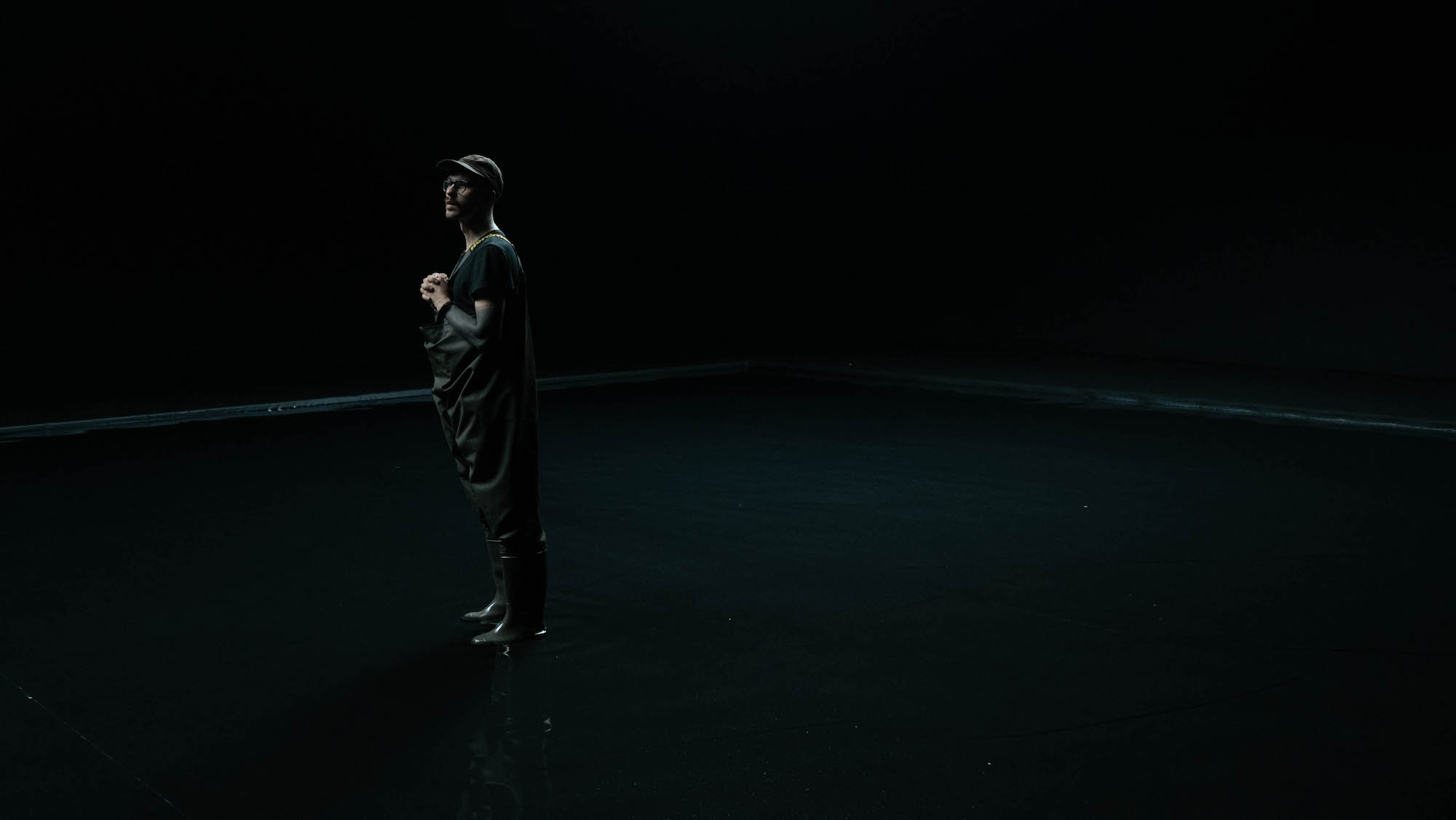

Overall our approach on set was like painting over a rough pencil sketch, basically we were replacing the rough ‘shot on the phone’ cut with the material we got on the set. I spent a good amount of time running back and forth from set to the editor to check if the shots cut well together, eyelines matched, camera speed was accurate, acting worked emotionally together.
I wanted to keep the same chemistry that we achieved on rehearsals on set while we were shooting, so I insisted that they should both be present on all of the shooting days. We were shooting the levitation scenes with Nikita in this tiny room full of people running around. After a few hours hanging on wires Nikita got really exhausted, so I asked Max to be there for him. Max came along and hugged and talked with him all the time when we were not shooting, and the pressure dissolved. I have received a few comments about how airy and streamlined the film is, and I am really happy that we managed to create this feeling on a set that was so in control in terms of creative decisions and timing.
I decided to immerse the viewer into the film so deep that they would see beyond sex cliches. I wanted to show two human beings that are in love.
In addition to the locations viewed through their respective windows, each room feels like a further look into who both these men are and a comment on their position against a wider society.
The production design was equally important in telling the story and creating a powerful atmosphere. In our first conversation about the project, PD Julija Fricsone asked me one simple question “Who are these characters?”. She wanted sets and props to speak to the viewer about the characters’ personalities, portray their subconsciousness, fears, dreams and true nature. We started brainstorming and she came up with the idea that Nikita is a young painter and Max is an art buyer. Nikita was hiding his true identity, Max is openly gay and that’s where their relationships got so complicated. This direction opened a new path of inspiration for props, colour palette and wardrobe. If you look closely you will find a lot of details that connect Maxim’s and Nikita’s apartments together.
Symbolism plays a big part in our film, adding hidden messages and choosing the right locations was the way to tell such a complicated story in a few minutes. The Orthodox Church does not approve same sex relationships and stands strongly against the LQBTQ community. That’s why we decided to add a few enigmatic messages in our film, like crucifixion marks on Nikita’s hands, Nikita and Max walking on water, and the image of scales on top of the door that leads to the black void. I don’t really want to give away all the clues, just pause the film at some point and you can find more.


Any final reflections on creating something that goes against what Russian society says is the correct way to be?
It took us a full year to produce this project, and despite all the trouble we had on our way we made it happen. I want to thank everyone involved for the support that was given to me during this journey. Special honour goes to Maxim and Nikita, coming out in front of millions of people in Russia takes massive courage.
And lastly, can you tease us with anything you’ll be working on next?
I am working on a feature script and looking for a new inspiring story to tell in a short format world.

